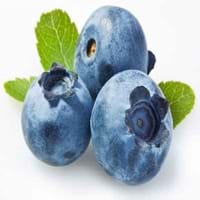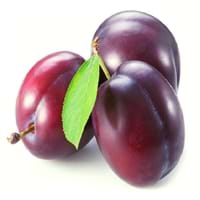Health Benefits
Anti depressant, Cancer prevention, Heart care, Increases metabolic rate, Prevents constipation
Cancer prevention, Cures gastro-intestinal troubles, Heart care, Increase in haemoglobin, Prevents diabetes
General Benefits
Anti oxidant properties, Controls blood pressure, Digestive aid, Eye care, Helps in weight loss, Strengthens bones
Anti-inflammatory properties, Boosts immune system, Digestive aid, Eye care, Flu treatment, Helps in weight loss, Maintains healthy cholesterol level, Treatment of common cold
Skin Benefits
Anti-aging benefits, Reduces wrinkles, Skin rejuvenation, Skin revitalization, Treatment of acne, Treatment of dark spots
Anti-aging benefits, Brightens and lightens complexion, Reduces wrinkles, Skin revitalization, Treatment of dark spots
Hair Benefits
Promotes longer and healthier hair, Regulates hair growth
Prevents hair loss, Promotes longer and healthier hair, Protects hair, Remedy for split ends, Treatment of dandruff
Allergy Symptoms
Abdominal pains, Anaphylaxis, Breathing difficulty, Coughing, Decrease in blood pressure, Diarrhea, Eczema, Fainting, Hives, Lightheadedness, Nausea, Runny nose, Sneezing, Swelling of mouth, tongue or lips, Vomiting, Wheezing
Abdominal pains, Anaphylaxis, Vomiting
Side Effects
Affects blood glucose levels, Decrease in blood sugar levels, Allergic reaction
Allergic reaction
Best Time to Eat
As a snack in the late afternoon, Eat the fresh ones, avoid mixing with any other foods, don't eat after meal., Morning time (before lunch)
As a snack in the late afternoon, Eat the fresh ones, avoid mixing with any other foods, don't eat after meal., Morning time (before lunch)
Vitamin B5 (Pantothenic Acid)
Vitamin C (Ascorbic Acid)
Vitamin K (Phyllochinone)
Calories in Fresh Fruit with Peel
Calories in Fresh Fruit without Peel
Not Available
Not Available
Varieties
Pink Lemonade, Bluecrop, Bluejay, Blueray, Bonus, Duke, Elliott, Jersey, Nelson, Northland, Patriot, Sierra, Spartan, Northcountry, Northsky and Premier and Climax
Victoria, President, Czar, Ariel, Avalon and Oullins Gage
Color
Blue, Indigo
Pink, Purple, Red
Inside Color
Greyish-white
Yellow
Taste
Sweet
Juicy, Sweet, Tart
Origin
North America
Caucasus
Soil Type
Porous, Well-drained
Clay, Loam, Sandy loam
Climatic Conditions
Cold
Cold
Facts about
- National blueberry month is July as blueberries are harvested in July.
- They are the official berries of Nova Scotia, Canada.
- Blueberries are used as natural food color and can protect you from memory loss.
- In china, plums are used for production of wine.
- A chemical called amygdalin found in plum seeds, turns into toxic compound in human body.
- Plum tree produces fruit 3-5 yrs after planting.
Top Producer
United States of America
China
Other Countries
Canada, Germany, Netherlands, Poland
Bosnia, Chile, India, Iran, Italy, Romania, Serbia, Turkey, United States of America
Top Importer
United States of America
United Kingdom
Botanical Name
Vaccinium myrtillus
Prunus domestica
Synonym
Not Available
Not Available
Subkingdom
Tracheobionta
Tracheobionta
Division
Magnoliophyta
Magnoliophyta
Class
Magnoliopsida
Magnoliopsida
Subclass
Dillenhidae
Rosidae
Family
Ericaceae
Rosaceae
Species
V. myrtillus
P. domestica
Difference Between Blueberry and Plum
We might think that Blueberry and Plum are similar with respect to nutritional value and health benefits. But the nutrient content of both fruits is different. Blueberry and Plum Facts such as their taste, shape, color, and size are also distinct. The difference between Blueberry and Plum is explained here.
The amount of calories in 100 gm of fresh Blueberry and Plum with peel is 57.00 kcal and 46.00 kcal and the amount of calories without peel is Not Available and Not Available respectively. Thus, Blueberry and Plum belong to and category.These fruits might or might not differ with respect to their scientific classification. The order of Blueberry and Plum is Ericales and Rosales respectively. Blueberry belongs to Ericaceae family and Plum belongs to Rosaceae family. Blueberry belongs to Vaccinium genus of V. myrtillus species and Plum belongs to Prunus genus of P. domestica species. Beings plants, both fruits belong to Plantae Kingdom.









